Shimano Dura-Ace Di2 R9200 is the latest flagship road groupset from the Japanese giant.
Officially launched in August 2021, the most notable upgrades over the previous R9170 groupset were a 12th cog at the rear and a new semi-wireless design.
On top of those more headline-grabbing changes, though, Shimano promised faster shifting than ever, better ergonomics, improved braking performance with less noise, and expanded gear ratios to suit modern riding styles.
Having accumulated many months on the new groupset, across a number of different bikes and seasons, I can confidently say Dura-Ace Di2 R9200 offers some of, if not the, best performance available today from a road bike groupset.
Some may lament that Shimano hasn’t pushed the envelope further, but the changes it has made offer tangible improvements, especially for those who like to run wider, more modern gear ratios.
Shimano should also be applauded for sticking with many of its tried and true standards, rather than simply innovating for the sake of it.
The existence of Shimano’s excellent Ultegra Di2 R8170 groupset (which launched on the same day as Dura-Ace Di2 R9200), makes stumping up the extra cash for a posh finish and a small decrease in weight increasingly difficult to justify.
But for those with deeper pockets or a simple desire to use the finest equipment available, Shimano Dura-Ace Di2 R9200 does not disappoint in terms of pure performance.
Shimano Dura-Ace Di2 R9200 setup

Most will be buying this groupset pre-installed on a bike, and therefore won’t need to worry about initial installation and setup.
With ever more road bikes having integrated front ends with fully internal cable routing, though, the move to a semi-wireless design is a smart one. This is because it alleviates some of the pain associated with adjusting a bike fit or servicing a headset (you’ll still need to deal with the hydraulic brake hoses, of course).
For those doing the installation themselves, you still need to sort the internal wiring between the battery and the two derailleurs, meaning setup is inevitably more complex than with a fully wireless electronic groupset such as SRAM Red eTap AXS.
Once it’s all on the bike, though, derailleur indexing and limit setting is done via the Shimano E-Tube Project app (more on this later), which makes getting everything working correctly fairly easy for home mechanics.
Shimano Dura-Ace Di2 R9200 drivetrain performance
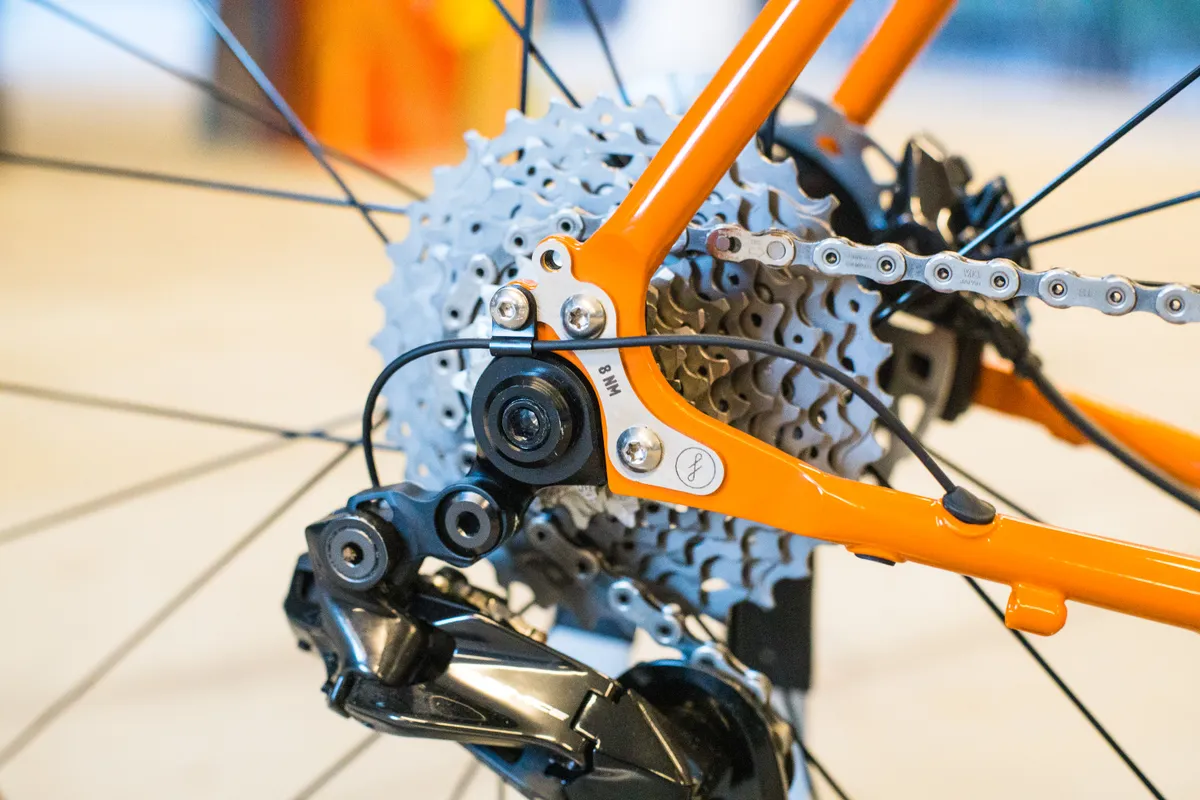
In general, drivetrain performance from Dura-Ace Di2 R9200 is outstanding.
Shifts at both ends are class-leadingly quick and crisp. Whether cross-chaining, shifting under power or when standing out of the saddle, everything just works.
It’s exceptionally quiet running in all gear combinations, which is delightful, and makes it feel as though all of your energy is going into moving the bike forward.
Overall, it’s an incredibly premium-feeling groupset, as you’d expect. None of the parts have any slop, slack or rattles and it feels beautifully constructed.
Shimano Dura-Ace Di2 ST-R9270 shifters
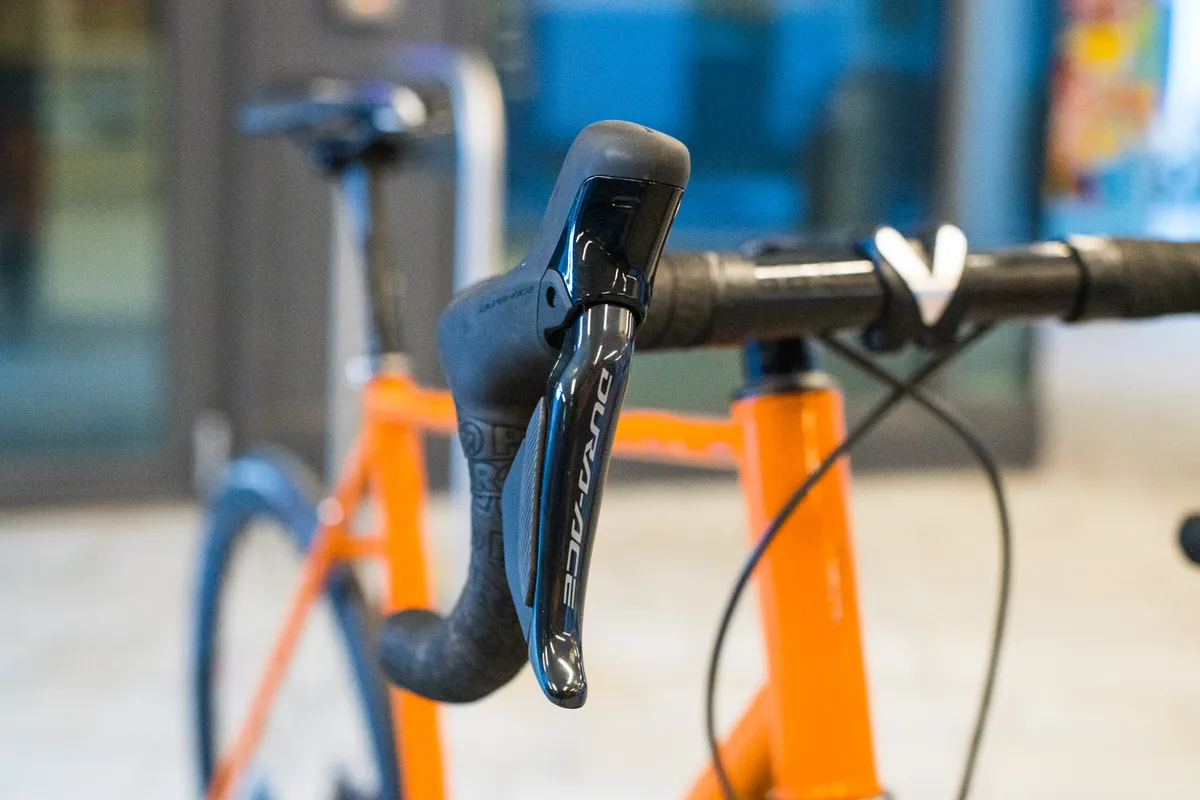
The new ST-R9270 hydraulic levers are where the groupset sees some of its biggest changes.
These now feature a wireless design, meaning the Di2 cables have been eliminated (of course, the hydraulic brake hoses remain). This helps alleviate internal cable routing headaches on bikes with complicated front ends.
Each lever is powered by a CR1632 coin cell battery, with a claimed life of around one and a half to two years (depending on how much you shift).
The shape and size of the lever bodies have also been modified, with a small but noticeable amount of length and height added.
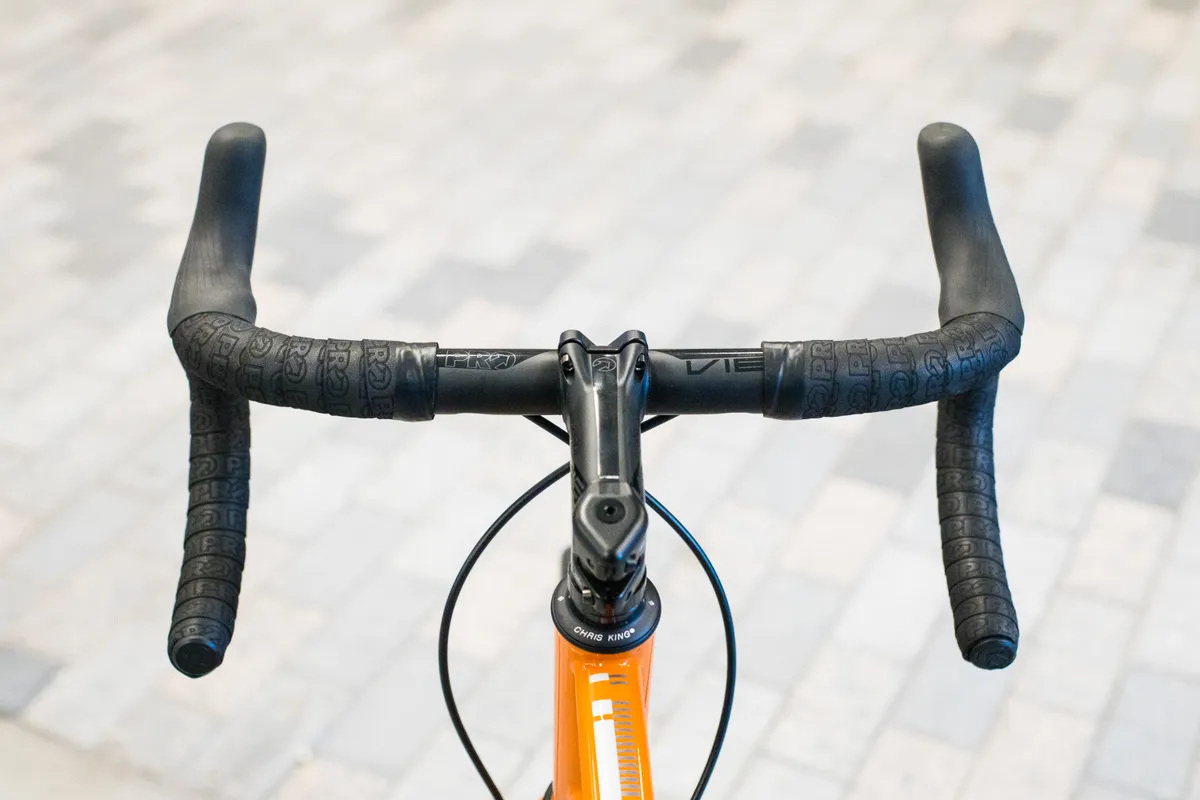
For me, the previous-generation shifters were slightly too small, so this is a welcome change. The taller, slightly inward-tilting hoods feel especially great to hold onto when getting low into an aerodynamic riding position.
A shroud also now covers the brake lever pivot point, but this is essentially just an aesthetic change.
Though the texture on each shift paddle has been updated slightly, I think Shimano could still afford to do more to make them more easily distinguishable when wearing thick full-finger gloves.
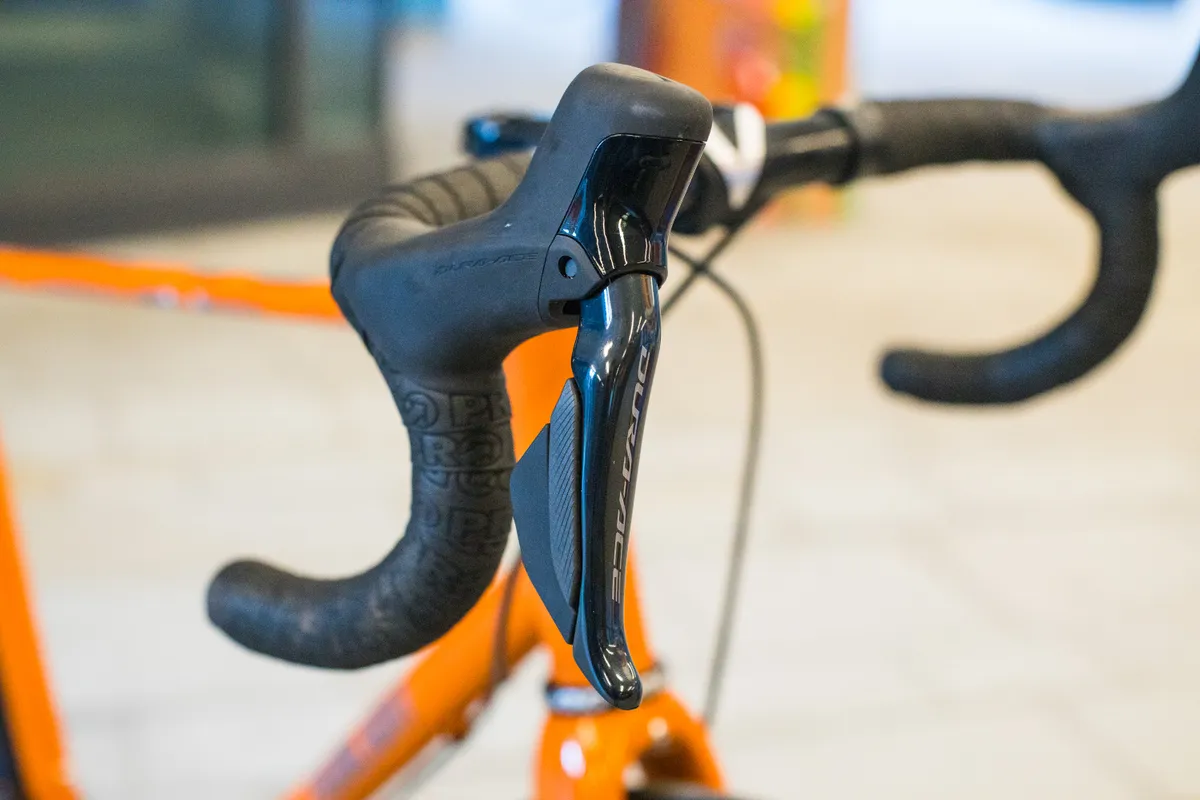
Granted, this isn’t the kind of groupset most people will be putting on a winter road bike, but the shift buttons are practically identical on every level of Shimano’s Di2 groupsets now, so it’s likely to be an issue for some people across the board.
As someone who lives in the UK and suffers a lot from cold hands, and is therefore often wearing gloves while riding, it’s frustrating to occasionally shift the wrong way by accident.
Mistakes such as this are easily rectified, but I find this never happens with SRAM eTap shifters and their double-tap shifting logic.
Shimano Dura-Ace Di2 RD-R9250 front derailleur

Having shrunk in size considerably since the previous generation, the new front derailleur maintains all the raw grunt we’ve come to expect of Shimano front shifting.
Shimano says it has reduced its frontal area by 33 per cent, which presumably means it confers a small aerodynamic advantage compared to the old one, but this isn’t noticeable while riding.
More helpfully, for owners of time trial bikes, the Dura-Ace Di2 R9250 front derailleur can officially handle up to 55-tooth chainrings.
If you’re searching for the efficiency gains of a big chainring, but still want to run a 2x setup, then Shimano has you covered here.
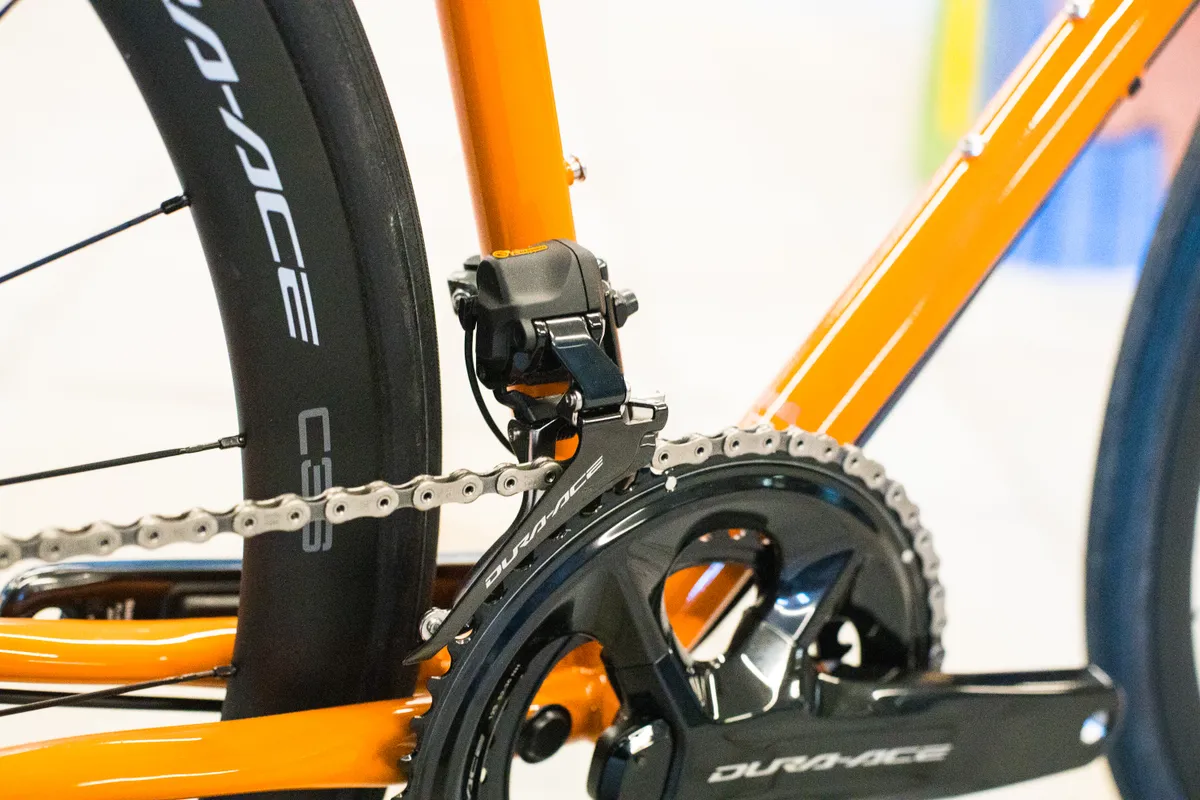
The claimed 45 per cent improvement in shift speed is hard to corroborate, given the bar was already set so high. It is perceptibly faster – especially if you put the previous-generation front derailleur next to it – but we’re talking about tiny differences in reality.
Regardless, shifting speed and power on up-shifts is exceptional – undoubtedly the best in the business.
As Warren reported in his review of Ultegra Di2 R8170, the only time front shifting is slightly sluggish is when shifting down from the big to the small chainring while climbing.
If you find yourself in slightly too big a gear, with your cadence slowing, there’s a small but perceptible hesitancy to shift down.
Perhaps Shimano has slowed the downshift slightly in comparison to the upshift, to help avoid chain drops.
Shimano Dura-Ace Di2 RD-R9250 rear derailleur

Arguably the centrepiece of the new groupset, the new RD-R9250 rear derailleur is where many of the most significant changes have occurred.
It contains the brains and charging port for the Di2 system, negating the need for a separate junction box placed elsewhere on the bike.
As before, it’s wired to a central battery housed within the frame, but the RD-R9250 can now communicate wirelessly to the RD-R9270 shifters (more on these later) and Bluetooth-compatible devices, such as bike computers or smart devices.
The move to a medium-length derailleur cage enables the use of wider-range cassettes than ever before with Dura-Ace, now up to 34t from 30t on Dura-Ace R9100.
This means those looking for easier climbing gears no longer need to resort to swapping in an Ultegra Di2 GS rear derailleur, or other creative solutions.
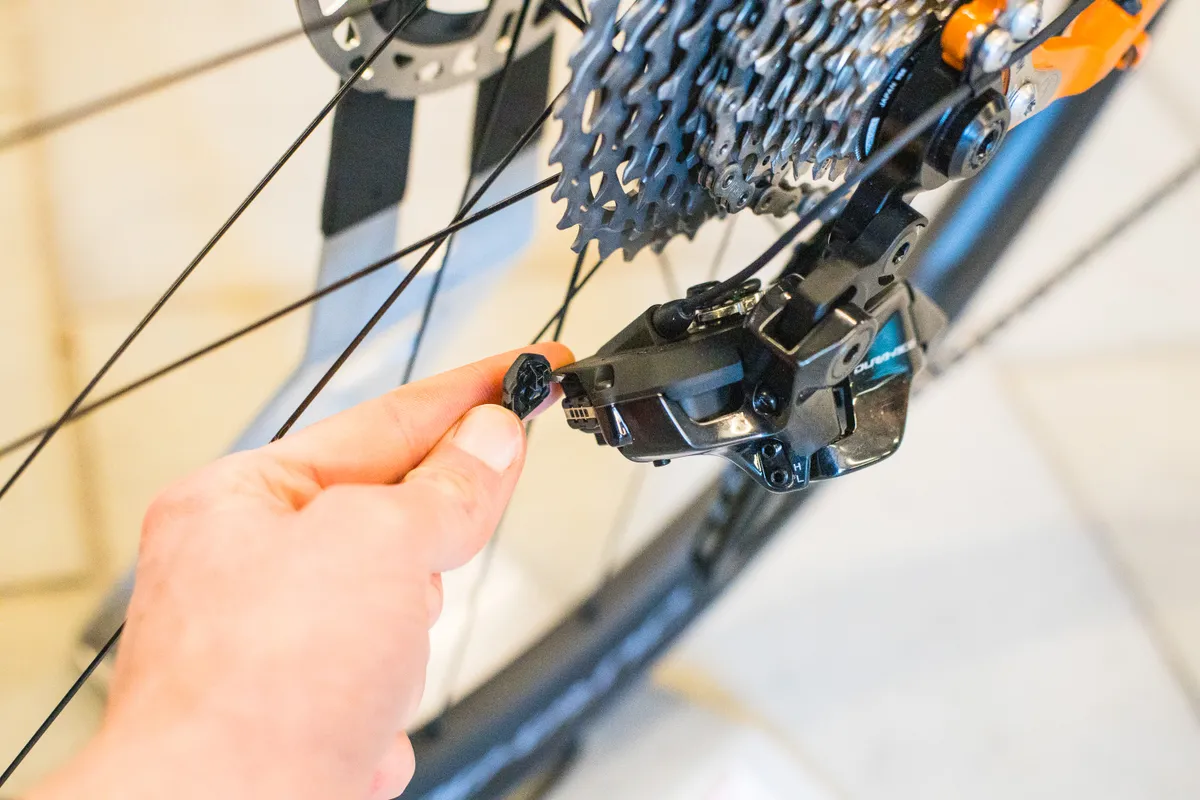
In terms of shifting performance, it's as good as it ever has been; arguably the best currently available.
Is it 58 per cent faster than before, as claimed? It’s hard to tell on the bike – Dura-Ace Di2 R9170 also shifted incredibly quickly at the rear. It is perceptible if you have the two shifting side by side, but the difference isn’t as obvious as it is with the front shifting.
Regardless, rear shifting is phenomenally good – and it’s hard to imagine how much better rear shifting from a conventional derailleur could be at this point.
Shimano Dura-Ace FC-R9200 crankset and chainrings
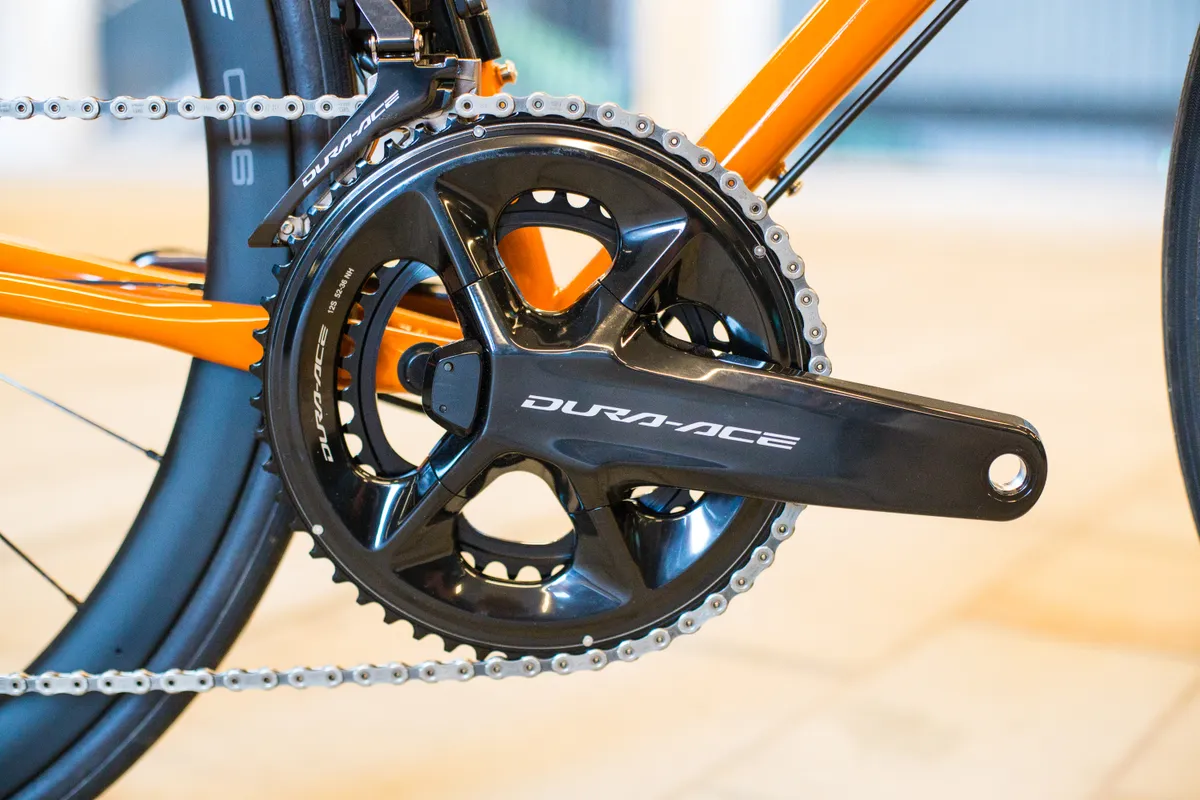
Functionally, the new Dura-Ace crankset is very similar to the outgoing model, but Shimano has subtly refined its construction and aesthetics.
It still uses Shimano’s Hollowtech II design and runs on the same 24mm-diameter steel spindle we’re all used to, which is designed for BSA/Italian threaded or BB86 press-fit bottom brackets (but adaptable to almost any bike available).
It attaches to your bike in the same manner as before, with two pinch bolts securing the non-driveside crank arm to the driveside crank. A bearing preload cap fills the spindle hole.

This may sound a bit dull, but I’m thrilled Shimano hasn’t messed with this just for the sake of it, or in search of tiny gains the majority of riders won’t be able to detect.
Cranksets are available in seven lengths from 160 to 177.5mm (down from 165 to 180mm), reflecting the growing trend towards shorter crank lengths across cycling.
The 4-bolt 110 Bolt Circle Diameter configuration is also maintained. If you’ve got a spider-based power meter with the same BCD, installing the new chainrings on that therefore shouldn’t pose any issues.
The new crankset comes in three different gearing combinations, 50x34t ‘compact’, 52x36t ‘semi-compact’ and a new 54x40t version, which replaces the 53x39t ‘standard’ version found in previous groupsets.
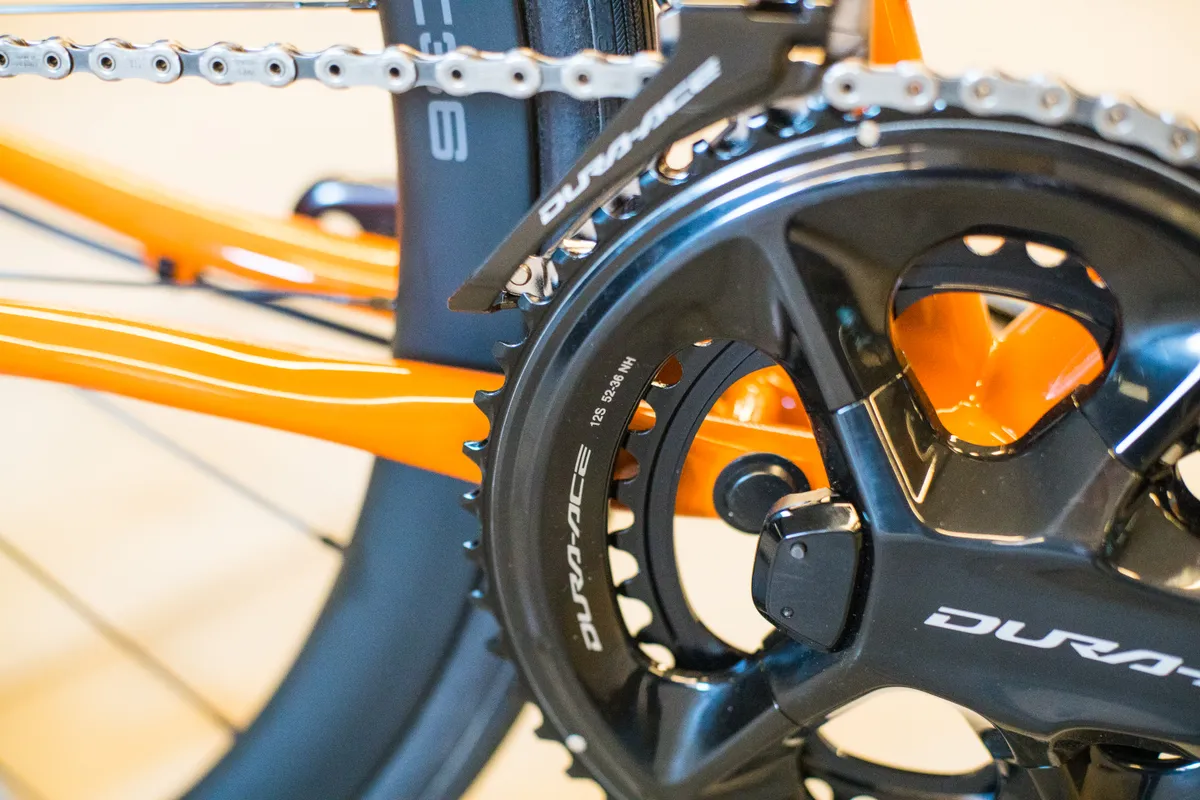
I’m pleased Shimano has stuck with the larger, more traditional gear ratios than the smaller ones found on SRAM’s latest AXS groupsets.
The marginally reduced efficiency of smaller chainrings and cassette cogs is clearly not the most important factor in determining your performance out on the road, but there is a measurable difference and I want all the help I can get.
There’s also a dual-sided power meter version of this crankset, but that deserves its own separate review. Look out for that further down the line.
What about 1x?
Those hoping for 1x drivetrain options may be disappointed, as officially that’s not an option here.
There’s no clutch derailleur variant and Shimano doesn’t offer any 1x-specific chainrings for Dura-Ace (or any of its road groupsets, as things stand).
We’ve seen plenty of time trial and hill climb bikes mounted with third-party 1x chainrings and standard Shimano rear derailleurs in the past, though. That remains a possibility here, but it’s not something Shimano would officially recommend.
Shimano Dura-Ace CS-R9200-12 cassette

While there were previously five different cassette options at this level, Shimano has consolidated things considerably for this generation of Dura-Ace.
As things stand, there are just two options, 11-30t and 11-34t.
An 11-28t alternative is said to be coming in the future, but the timescale for that remains unclear as things stand.
Given the 11-30t option has one-tooth jumps for the first seven sprockets (the same number as an 11-speed 11-25t Dura-Ace R9100 cassette), it’s unlikely too many people will be clamouring for an even tighter option.
The two iterations currently available cover practically everything most road riders and racers need, and it makes the easiest possible gear combination (34x34t) considerably smaller than it was previously (34x30t).

The progression of the wider-range, 11-34t cassette is also excellent. It has tight, one-tooth jumps between the first five cogs, and then progressively larger jumps as you go further up the cassette.
This gives you a big range of gears, but doesn’t sacrifice the ability to finely manage your cadence when riding fast. It’s a big improvement compared to Shimano’s 11-speed 11-34t cassettes, which had a much more linear progression across the range.
The new Dura-Ace cassettes (and the Ultegra and 105 12-speed equivalents) are compatible with both the new Shimano freehub standard and older 11-speed HG freehubs. There should be no need to purchase a new wheelset alongside the new groupset. Bravo Shimano.
The six titanium and six steel cassette teeth are heavily profiled with Shimano’s new Hyperglide+ technology, and offer smooth and quiet shifting all the way through.
Shimano XTR CN-M9100 12-speed chain
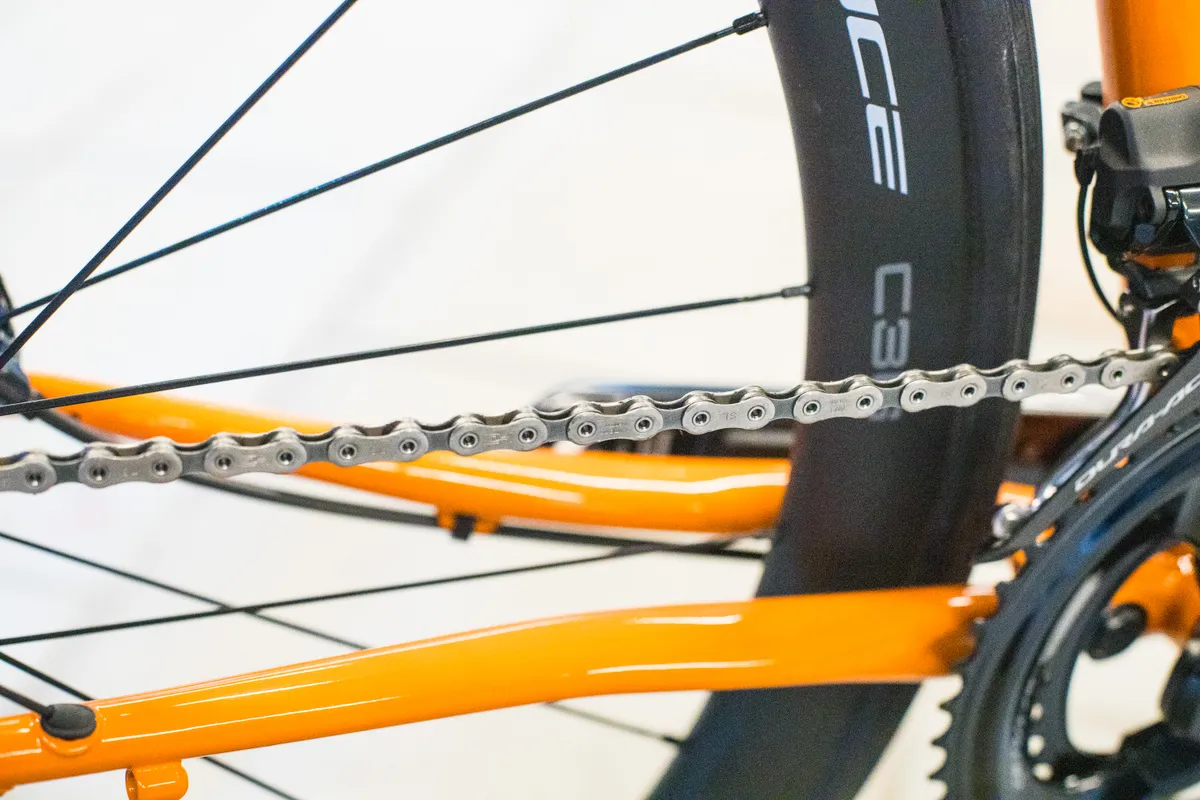
Rather than make a whole new chain for 12-speed Dura-Ace, Shimano has simply adopted the one from its 12-speed XTR M9100 MTB groupset.
Functionally, it does everything you could ask for from a chain. It glides across the cassette and chainrings with ease and generates very little noise, no matter which gear combination you’re using.
Shimano Dura-Ace Di2 R9200 braking performance

While Shimano’s previous generation of hydraulic road disc brakes were rightly praised for their power and modulation, there was clear room for improvement in terms of how noisy the system was in wet conditions, or after prolonged heavy braking.
When using the latest ST-R9270 brake levers, BR-R9270 brake calipers and latest RT-CL900 rotors all together the improvements are clear to see. This is, though, unfortunately, still rare – only one Dura-Ace equipped bike I’ve tested this year, the Scott Foil RC Pro, had all of these parts.
The brake levers now have Shimano’s Servo Wave technology, which gives a non-linear relationship behind lever and pad movement.
Effectively, you get more power from less movement of the brake lever, which helps make braking from the hoods (where you naturally have less leverage) a bit easier.
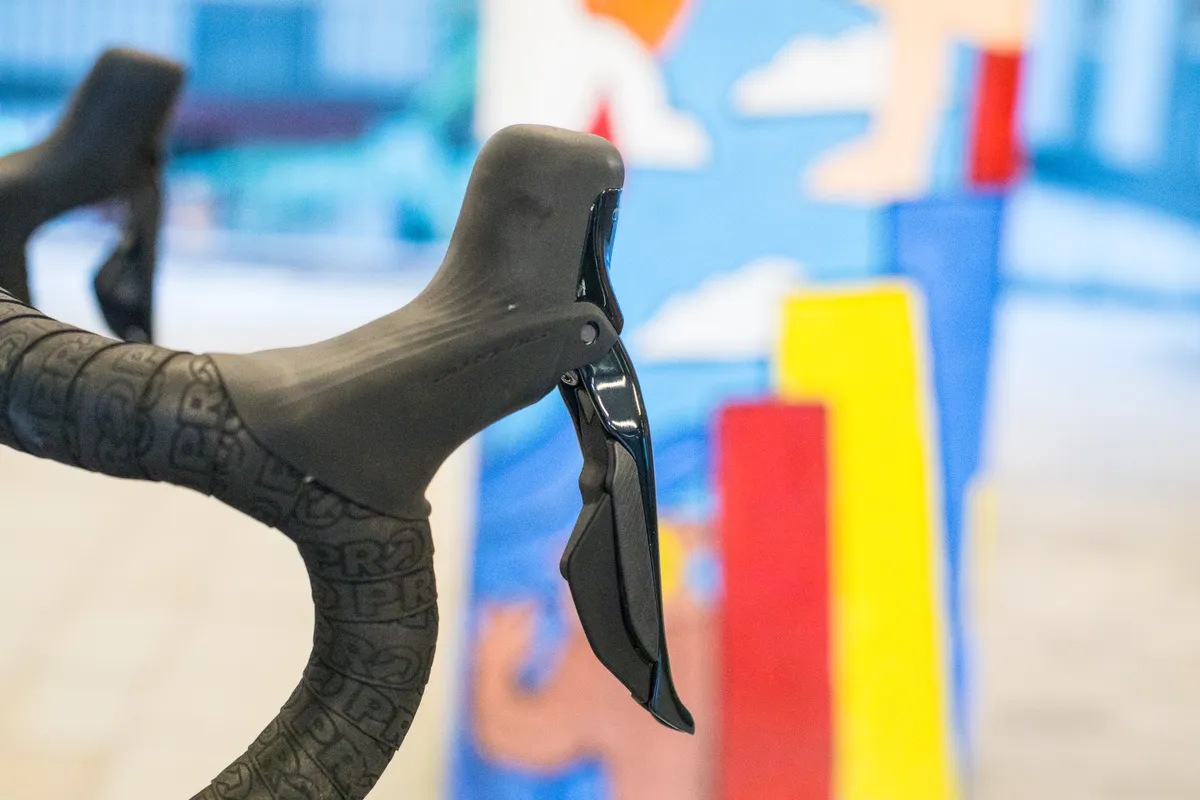
It also enables the pads to be more widely spaced from the rotor, because the initial movement of the pads when you pull the brake lever is faster than on non-Servo Wave brakes.
Shimano says pad spacing on the new Dura-Ace BR-R9270 brake calipers is up by 10 per cent compared to the previous versions.
It’s worth remembering 10 per cent of something tiny isn’t a lot, so it’s not a night and day difference.
It certainly reduces the incidence of annoying scrapes from dirty rotors on mucky days, but it is still possible to induce noise from rotor scrape for a few minutes after prolonged heavy braking if you’re not using the latest rotors.
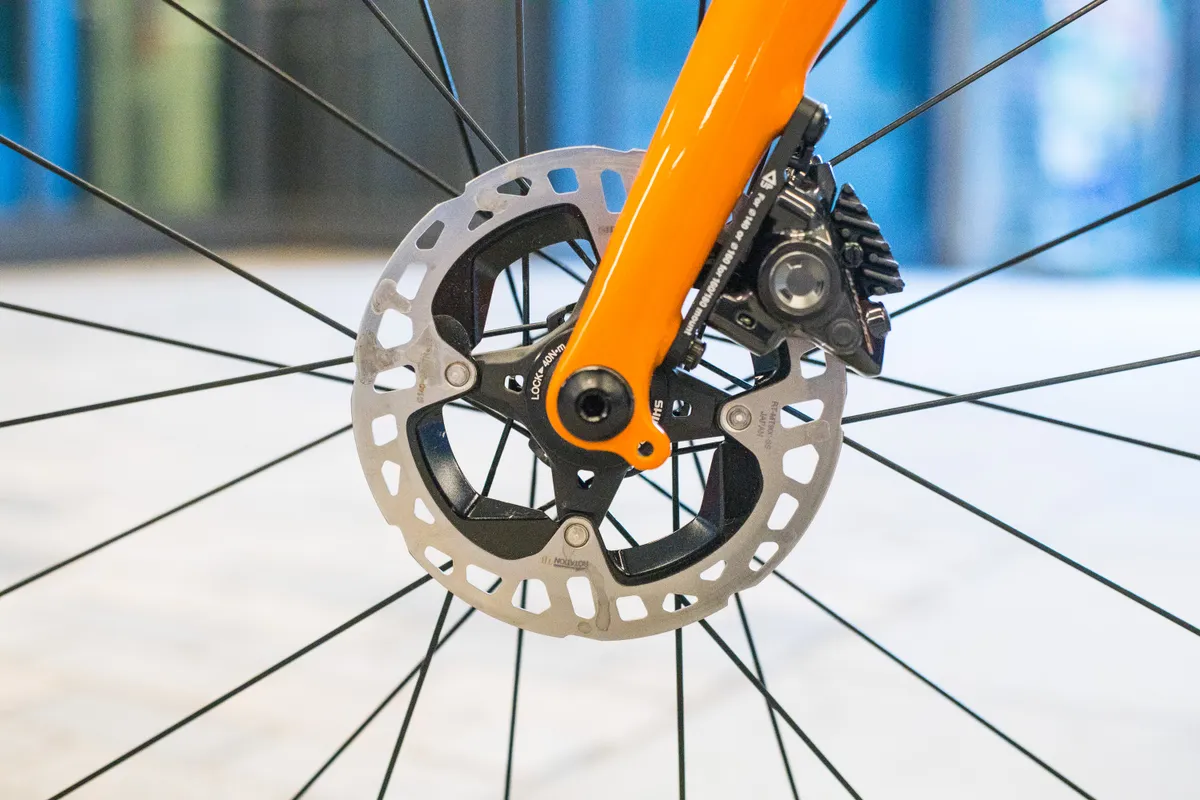
This, for me, is why the new, beefed-up RT-CL900 rotors (which were launched quietly in June 2022 alongside 105 Di2 R7150) are the star of the show on the braking front.
With these in place, brake squeal in wet weather is greatly reduced. Plus, those annoying tings and scrapes largely disappear.
With the XTR RT-MT900 rotors (which accompanied the groupset at launch), or the previous-generation Dura-Ace SM-RT900 rotors, the improvements are far less apparent, however.
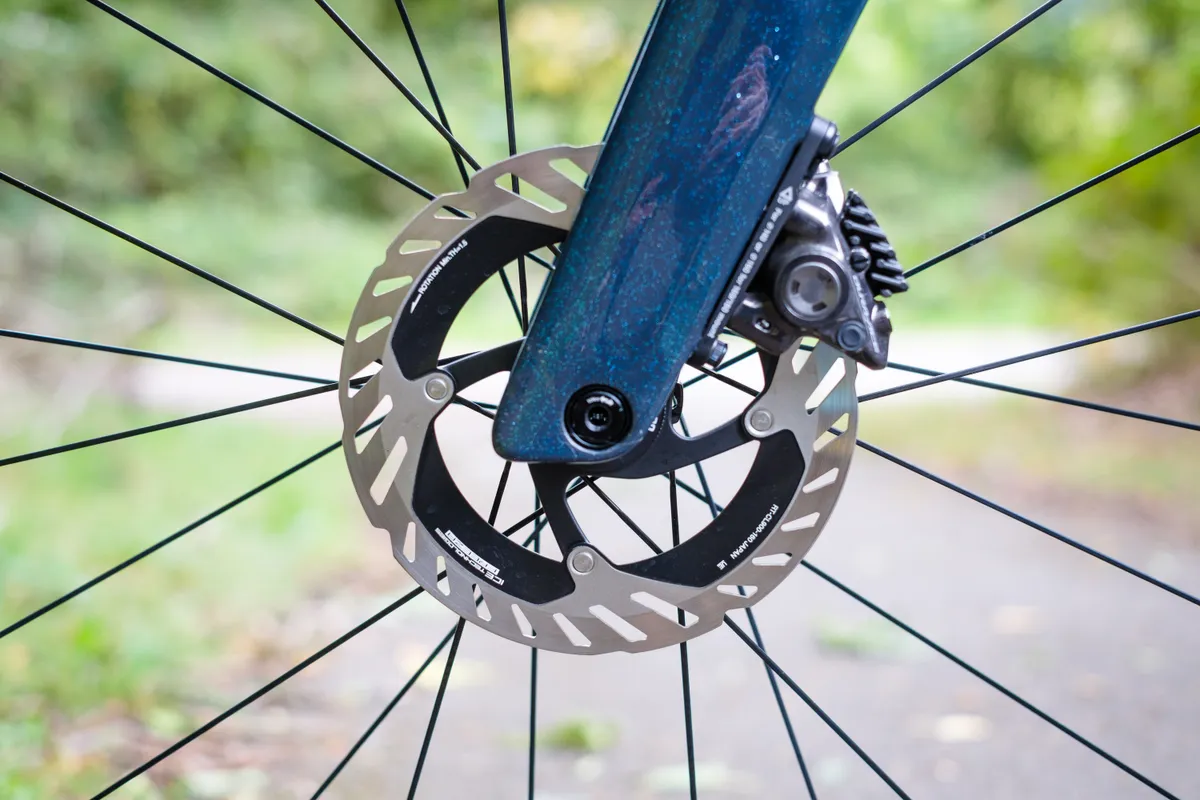
Power, modulation and feel are all great either way, but if you want quieter brakes in all weathers (and who doesn’t) then you need the RT-CL900 rotors as well.
One nice touch worth noting for home mechanics is that Shimano has moved the bleed port onto the outward-facing side of the new brake calipers, which makes it easier to access in situ.
Connectivity, Synchro-shift and Shimano E-Tube app

As well as being the brains of the Di2 system, the RD-R9250 rear derailleur also now does the job of the Di2 Wireless Unit (EW-WU111) accessory.
This means Bluetooth and ANT+ connectivity is now built into the rear derailleur, negating the need to purchase a separate accessory and enabling it to communicate with smart devices and bike computers straight out of the box.
This also gives you access to Shimano’s E-Tube Project app (available for Windows PCs, as well as iOS and Android devices), where you can update system firmware and customise your shifting setup, and tune the derailleur indexing and limits as required.
Like most of my colleagues at BikeRadar, I don’t mind the semi-synchro shift setting (where the rear derailleur automatically shifts up or down to compensate for a front shift and keep your cadence smooth). It’s a nice feature, albeit one that automates something experienced riders most likely do on all bikes without thinking.
I don’t rush to turn it on every time I test a bike with Di2, but it works well and doesn't have any major drawbacks, so it’s a nice option to have.
Full synchro-shifting (where the front derailleur automatically shifts up or down, depending on where you are on the cassette, to maintain an optimum chainline) isn’t my cup of tea, though.
Too often, mostly on short steep hills where you’re looking to power over in the big ring (optimum chainline be damned), it can shift when you don’t want it to, which can create a jarring interruption to your rhythm.
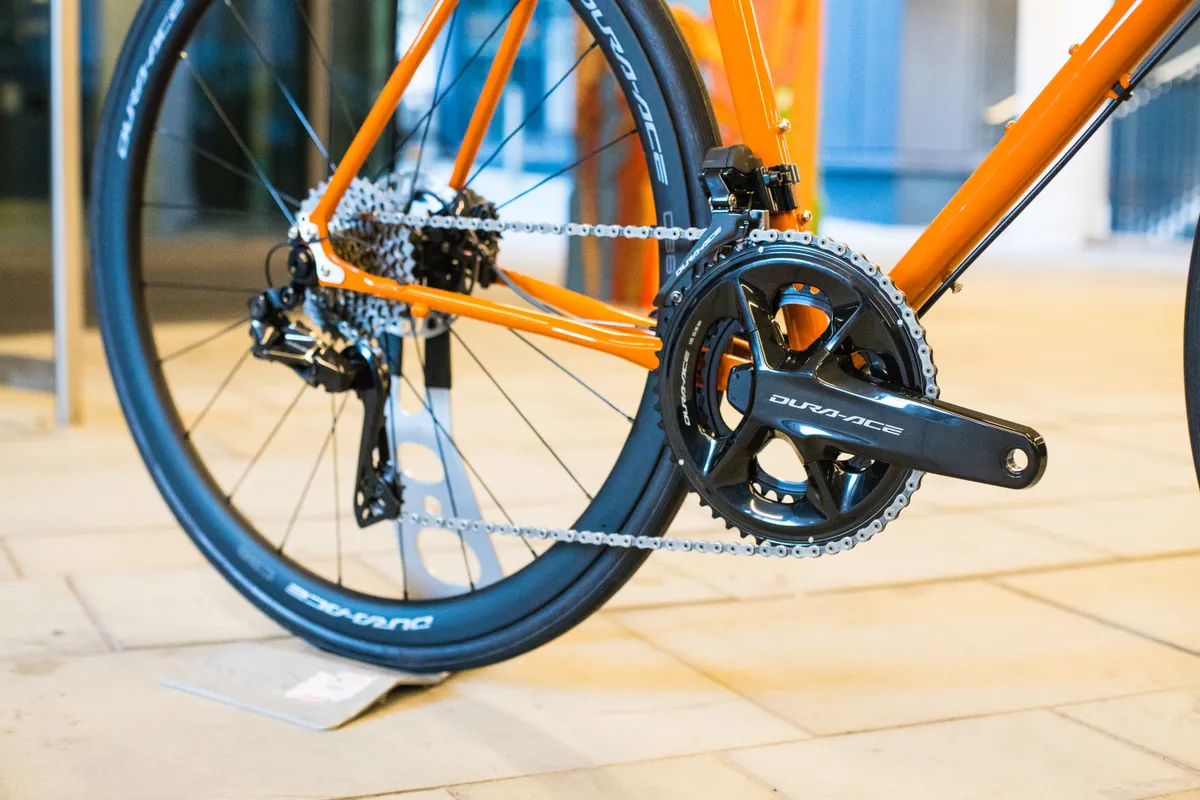
Of course, if you’re always aware of what gear you’re in at any moment then it’s possible to learn exactly when the system will shift the front in response to your rear shift (this can also be customised in the E-Tube Project app), and avoid such pitfalls.
Likewise, if you really care about maximising your drivetrain efficiency at all times, then it's an ideal way to guarantee you’re nearly always in an optimal gear combination.
For me, though, because the difference in gearing between the inner and outer chainrings is such a big jump, I prefer to stay in full control of when that takes place.

Beyond that, though, there’s not much more to it beyond setup and maintenance.
As before, if you don’t like the default shifting arrangement you can use E-Tube Project to customise which buttons perform which functions.
You can also customise the multi-shift function, which controls how many gears the rear derailleur will shift (and how quickly it will do it) if you simply hold down one of the shift buttons.
This can be useful if, for example, you want to be able to shift down a predetermined number of gears in a sprint with one long button press, without the risk of the rear derailleur dumping you into too big a gear.
Unlike SRAM’s AXS app, E-Tube Project doesn’t give you in-depth information on how you’re using your gears. That said, this information can be exported using di2stats.com, provided you’re using a compatible Garmin Edge bike computer to record it.
Shimano Dura-Ace Di2 R9200 weight
In total, my complete Dura-Ace Di2 R9270 groupset weighs 2,514g.
That’s 76g heavier than the 2,438g figure quoted at launch, but the test groupset includes the FC-R9200-P power meter crankset and 11-34t cassette, which account for a claimed 58g and 33g extra, respectively, compared to the standard crankset and 11-30t cassette.
It also includes all of the various small parts needed to mount the groupset to your bike, such as rotor lockrings, the internal battery mounting kit and the hydraulic brake hoses.
| Component | Weight (grams) |
|---|---|
| FC-R9200-P power meter crankset (52x36t) | 750 |
| ST-R9270 shift / brake levers (pair) | 366 |
| CS-R9200-12 cassette (11-34t) | 256 |
| CN-M9100 chain (112 links, including SM-CN910-12 quick-link) | 240 |
| RD-R9250 rear derailleur | 217 |
| RT-MT900 rotors (pair, 140mm + 160mm) | 196 |
| BR-R9270 brake calipers (including pads, mounts, bolts & hoses) | 299 |
| FD-R9250 front derailleur | 96 |
| BT-DN300 battery | 52 |
| Wires (2x EWSD300, 1,200mm & 700mm) | 21 |
| Rotor lockrings (pair) | 16 |
| Battery mounting kit (spacers & circlip) | 5 |
| Total | 2,514 |
According to Shimano, Dura-Ace Di2 R9270 is 35g heavier (for an equivalent complete groupset) than its predecessor, R9170, but this doesn’t have any bearing on performance.
Compared to SRAM Red eTap AXS (claimed 2,518g) and Campagnolo Super Record EPS (claimed 2,505g), it’s essentially a draw between the big three as well.
More pertinently, Dura-Ace Di2 R9270’s weight advantage over Ultegra Di2 R8170 is only around 278g, according to Shimano.
For the weight weenies of this world, just knowing that difference may be enough to sway you to Dura-Ace, but for everyone else, it really isn’t noticeable.
Shimano Dura-Ace Di2 R9200 aesthetics
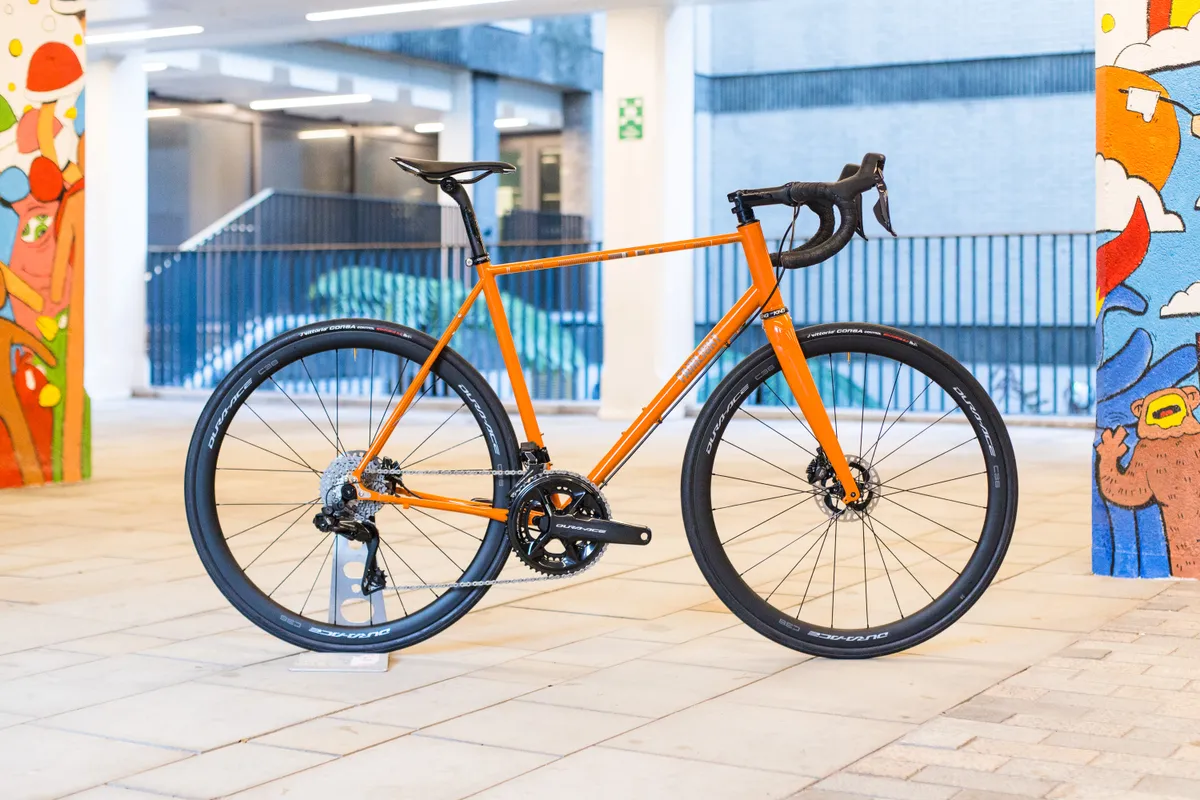
Though it might seem inconsequential, one of the great appeals of a top-end groupset is it’s usually the shiniest, prettiest groupset a brand offers.
After all, Ultegra Di2 now matches Dura-Ace Di2 for performance in practically every area, so there needs to be a reason beyond the minimal weight savings to justify the extra financial outlay.
While many, myself included, were clamouring for some polished metal à la Dura-Ace R9000 (one of the most handsome groupsets of modern times), Dura-Ace Di2 R9200 doubles down on an all-black aesthetic.
It is at least gloss black, which gives it a premium shine, and the general feel of the groupset overall is one of undoubted quality.
But it’s also fair to say you’d be hard pressed to distinguish much of Dura-Ace Di2 R9200 from the new 105 Di2 R7150 groupset at a glance, if you removed the logos.
That’s not to say Shimano Dura-Ace Di2 R9200 isn’t an elegant looking groupset – I just don’t think it’s likely to become a classic of the genre on style alone.
Shimano remains one of the primary champions of aluminium components (aside from a brief flirtation with carbon cranks in 2007). But it almost feels as if the new Dura-Ace is trying to hide its alloy construction.
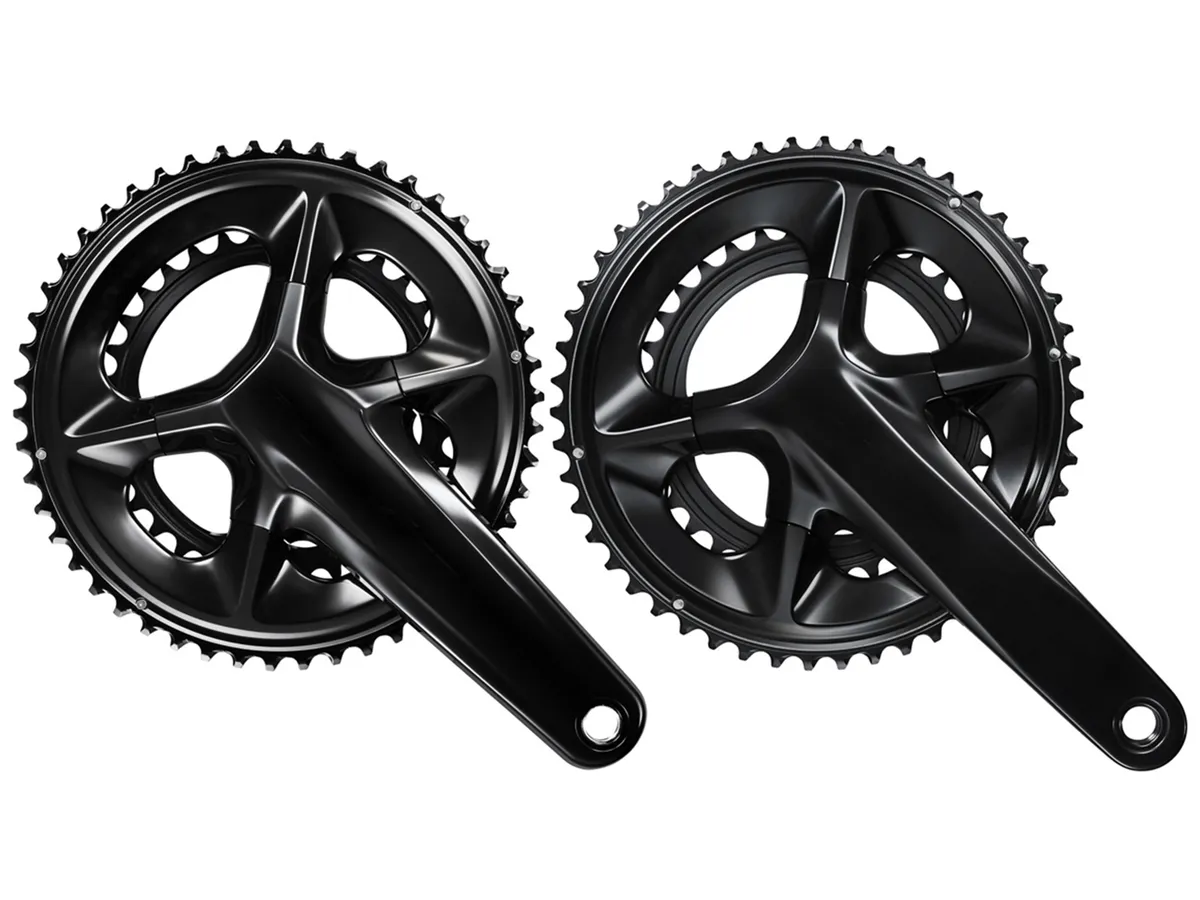
Could this be because SRAM and Campagnolo have moved to using increasing amounts of carbon fibre across their high-end components in recent years?
It’s true many riders assume that carbon is ‘better’ than aluminium, especially when it comes to bike materials, whether or not that’s actually the case. Perhaps this explains a decision to mimic the aesthetic of carbon.
When we put this to Shimano, though, it shied away from this line of questioning and said simply the colour and finish of its products are selected based on the judgements of its design teams, in conjunction with wider market trends.
Curiously, though, I think Shimano knows there’s a growing appetite for more stylised components. After all, it released GRX Limited – a limited-edition, polished-silver version of its GRX 810 gravel groupset – earlier this year, to widespread acclaim.
Could we see this Dura-Ace groupset get a similar treatment in the future? One can dream.

Shimano Dura-Ace Di2 R9200 pricing and value
Adding up the individual component costs gives a total of £3,593.89, excluding the power meter crankset (add another £650, if you want that too).
As usual, real-world prices for the groupset vary and are generally slightly lower, depending on what options you choose.
Nevertheless, that’s £1,260.99 more expensive than Ultegra Di2 R8170 (£2,332.90 at RRP, but also available for slightly less online at the time of writing), meaning the 278g of weight saved by opting for Dura-Ace costs around £4.50 per gram.
Considering how good the likes of Ultegra Di2 and SRAM Force eTap AXS are, Dura-Ace Di2 – and other high-end groupsets – can seem like pretty poor value in comparison.

Dura-Ace Di2 is a showpiece, though. It’s a demonstration of the best Shimano can reasonably achieve at any point in time.
In the end, it comes down to this: do you want it, and can you afford it? If the answer to those two questions is yes, then it doesn’t really matter whether or not anyone else thinks it’s good value.
But if you do care about making better bang-for-buck Shimano groupset decisions, you need to be looking at Ultegra or 105 Di2 instead.
It is also possible to substitute components in from both of those 12-speed groupsets to save money when replacing parts, because they're all fully cross-compatible.
Consumable parts such as the chain, disc brake rotors and cassettes are substantially cheaper at the Ultegra level, for example, and only marginally heavier.
Shimano Dura-Ace Di2 R9200 bottom line

Shimano Dura-Ace Di2 R9200 is light, offers best-in-class shifting and is easier to install and live with thanks to its updated, semi-wireless design.
The braking sees a significant step up too, provided you can get a full suite of the new parts.
Shimano also deserves praise for making improvements where needed but leaving alone the things that work.
All that said, I’m not sure this generation of Dura-Ace quite pulls at the heart strings in the same way some previous generations have.
Given this, it feels difficult to justify the extra cash outlay versus Ultegra Di2 (or even 105 Di2) when the only advantages are a few niche customisation options, a little less weight and a slightly shinier finish.
That’s nothing new, though. The gains at the top of the price scale are often marginal, and if you want one of the lightest, best-performing road bike groupsets available – and are prepared to pay for it – then Dura-Ace Di2 R9200 is just that.
Product
| Brand | shimano |
| Price | 3593.89 GBP |
| Weight | 2514.0000, GRAM () - Including FC-R9200-P power meter crankset and 11-34t cassette |
Features
| br_crankOptions | double |
| br_speed | 12 |
| br_brakeType | hydraulic_disc |
| br_cassetteOptions | 11-30t, 11-34t |
| br_chainringOptions | 50x34t, 52x36t, 54x40t |
